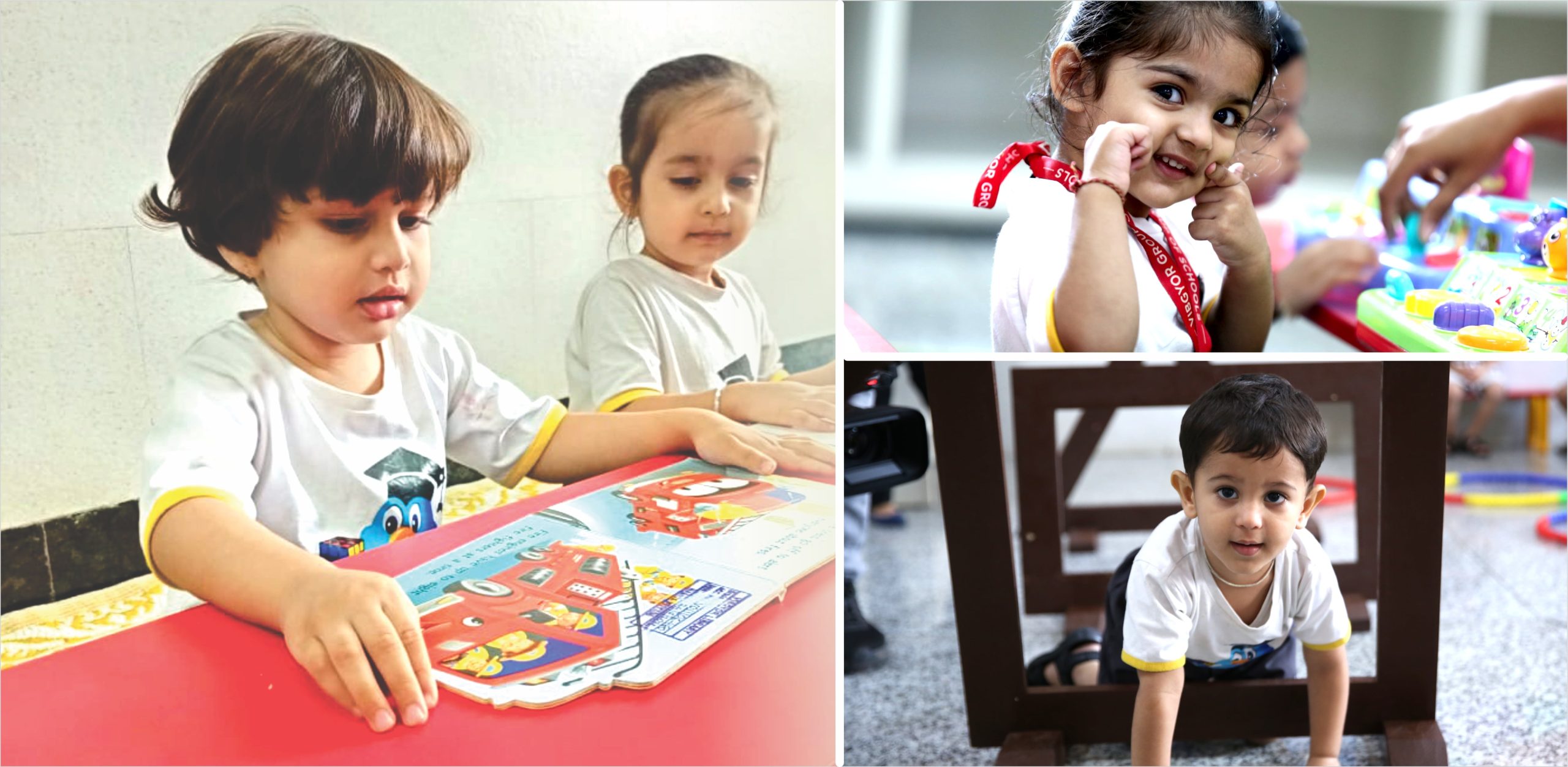![]()
Choosing the right educational board for your child is one of the most critical decisions you’ll make as a parent. It can be overwhelming to decide which is the best school board for a child, as there are a variety of options available, including Central Board of Secondary Education (CBSE), Indian Certificate of Secondary Education (ICSE), State Boards, Cambridge International Education (CIE), and International Baccalaureate (IB), and Waldorf. This comprehensive guide aims to simplify the process by comparing different educational boards, outlining their benefits, and providing factors to be considered while making the decision.
Understanding School Board Options
In India, every education board has its unique curriculum, teaching methodologies, and assessment patterns.
to different educational needs and goals.
CBSE is known for its national presence and structured curriculum, making it a popular choice among parents. The curriculum is designed to foster analytical skills and is aligned with competitive exams like JEE and NEET, making it suitable for students pursuing engineering or medical fields. CBSE provides national recognition and a strong emphasis on science and mathematics. However, it may offer less focus on the humanities and arts, with an occasional tendency towards rote learning. CBSE’s standardised curriculum provides consistency for families who move frequently within India.
On the other hand, ICSE focuses on a balanced curriculum with equal emphasis on languages, arts, and sciences. It encourages critical thinking and creativity, ensures a deep understanding of subjects. It provides a comprehensive curriculum with a strong emphasis on English language and literature, offering a holistic education. ICSE’s emphasis on English and comprehensive curriculum equips students for diverse yet rigorous academic pursuits.
State Boards offer region-specific curriculums and are usually taught in the regional language, suitable for those planning to pursue further education within the same state. State Boards provide affordability and a curriculum aligned with state universities but vary in quality and may not prepare students for national-level exams. The regional language medium can also pose challenges as it may cater only to local needs.
Cambridge International Examinations (CIE), part of the International Board, provides a global perspective on education, emphasises on creativity, critical thinking, and independent learning, and prepares students for an interconnected world. It is ideal for families seeking an international standard of education for their children. CIE education can be expensive and have limited availability.
International Baccalaureate (IB)’s practical approach towards learning helps children carve their own learning path with real-life concept-based learning. By fostering critical thinking and problem-solving skills, IB prepares students to be global citizens and lifelong learners. This educational framework is designed to cultivate inquisitive minds, enabling them to apply their practical knowledge in various contexts.
Waldorf Education, on the other hand, makes students passionate about learning by teaching them a subject through various vantage points. This holistic approach integrates artistic, practical, and academic experiences to nurture creativity and cognitive development. Waldorf methods emphasise the development of the whole child—intellectually, emotionally, and socially—through a curriculum that evolves in harmony with the students’ growth stages. This approach encourages students to view learning as an interconnected and dynamic journey.
Selecting the Right Curriculum for Your Child
Selecting the right board for your child depends upon a lot of factors such as learning style, future plans, flexibility of easy transition between different boards, the school’s reputation, and affordability. For instance, children who thrive in structured environments can enjoy a disciplined learning approach in CBSE, while others who excel in a more balanced and exploratory learning approach can choose between ICSE or International Boards (CIE, IB, Waldorf).
Additionally, if you anticipate relocating within India, a national board like CBSE can provide continuity in education. Researching the schools offering the curriculum is crucial, as a good school can significantly enhance the learning experience, regardless of the board.
Parents’ Guide to School Boards
For parents, selecting the right education board involves careful consideration of various factors as mentioned below:
- Engage with teachers, visit schools, and talk to other parents to understand the pros and cons of each board.
- Take into account your child’s strengths, interests, and future aspirations.
The right school board is one that aligns well with your child’s learning style, aspirations, and your family’s educational philosophy.
| SSC/HSC | CBSE | CISCE | IB | Waldorf | CIE | |
| Full Form | Secondary School Certificate/Higher Secondary Certificate | Central Board of Secondary Education | Council for the Indian School Certificate Examinations | International Baccalaureate | Waldorf Education | Cambridge International Education |
| Level | State | National | National | International | International | International |
| Examination | 2 major examinations on 10th (SSC) and 12th (HSC) | 2 major examinations on 10th and 12th | 2 examinations on 10th (ICSE) and one for 12th (ISC). | Examinations are divided into 3 sections: PYP (Kg to 5th), MYP (6th to 10th) and DYP (11th and 12th). | Multi-staged examination on real-life topics | 2 exams: IGCSE for 14- to 16-year-olds and AS&A for 16- to 19-year-olds. |
| Learning Approach | More focus on educating the students about their local and state heritage. | Briefly consists of every essential topic as per the age of the students. The focus is more on textual knowledge. | More emphasis on real-world application than memorizing. | Students are liberated to explore the world and their surroundings limitlessly, with more focus on instilling in students the values of a global citizen. | Developmentally appropriate, experiential, and practical approach. | Solely intend to prepare the students for life after school. They have various (more than 50 subjects) to choose from and the curriculum is set according to the choice of the students. |
| Fee Structure | Nominal | Moderately high | Moderately high | High | High | High |
| Language of Instruction | State language and English | English and Hindi | English | English | English | English |
| Ideal For | Students aiming for state colleges and universities | Students who plan to attempt national competitive exams | Students who plan to pursue their higher education abroad | Students who seek global exposure and international education | Students who like to explore their creativity through experience learning | Students who are seeking holistic education |
Conclusion
At VIBGYOR Group of Schools, we offer a range of curriculum options to suit the diverse needs of our students, ensuring that each child receives the best possible education tailored to their unique abilities and goals. Whether you are considering CBSE, ICSE, or Cambridge (CIE), we provide a nurturing environment that supports your child’s academic and personal growth. In conclusion, choosing the right school board for your child is a significant decision that requires thorough research and thoughtful consideration. By understanding the differences and assessing your child’s needs and goals, you can make an informed decision that will provide the best educational foundation for their future. Remember, the right school board is one that best suits your child’s unique learning style and future aspirations





